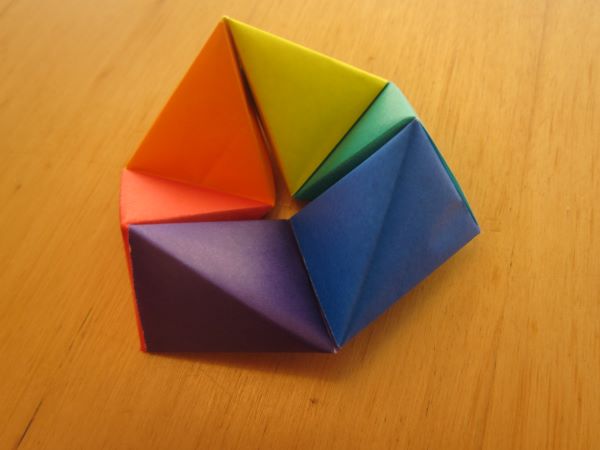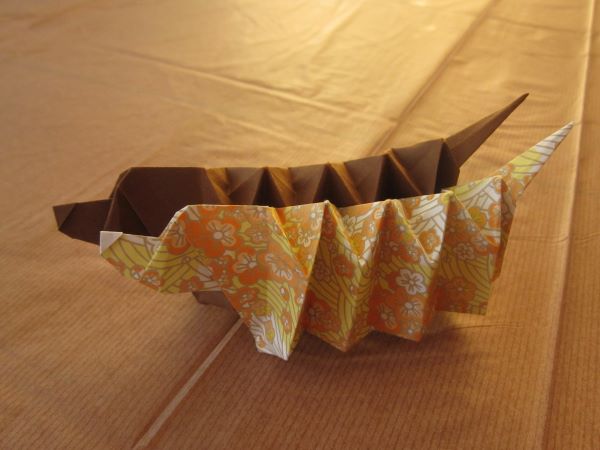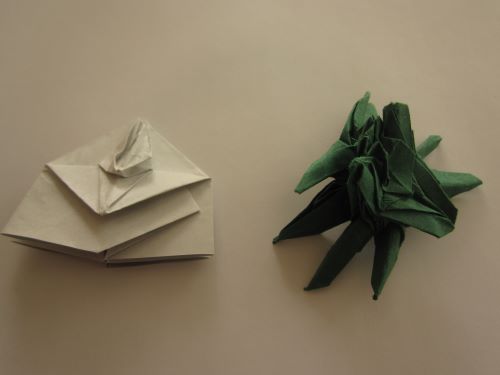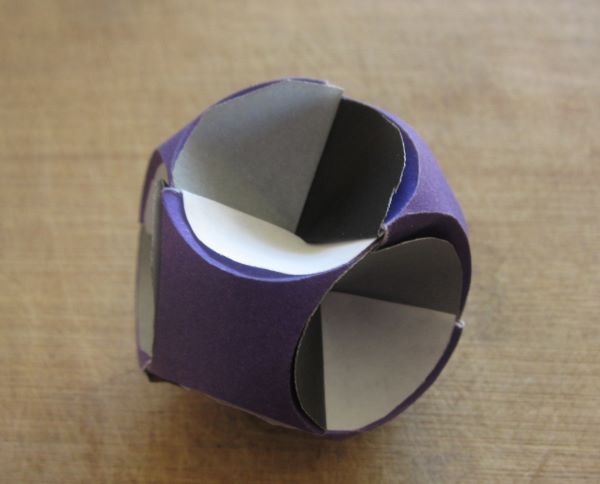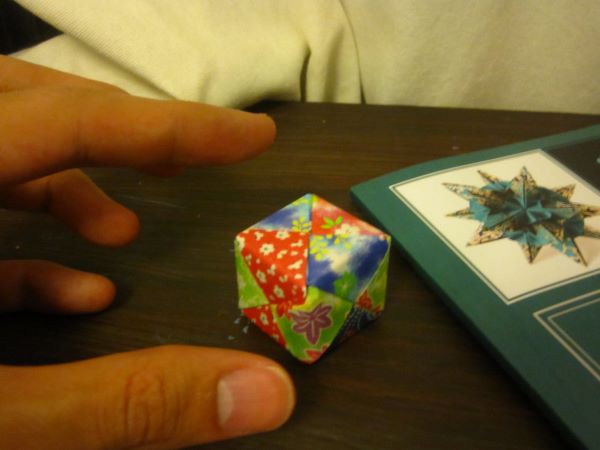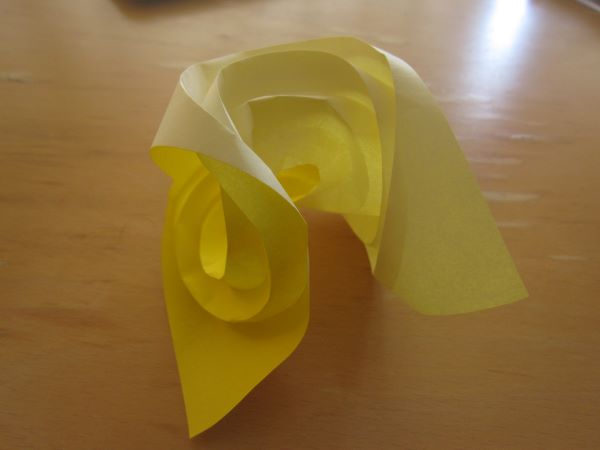
Circular Hypar, a “common” design
This model dates back to when I was experimenting with curved creases. A very simple model is to make alternating creases in concentric circles, and cut out the center of the paper. To me, it’s such a simple thing, but I’ve heard a lot of people really like this one.
If you like this one, check out the sculptures of Erik Demaine!

